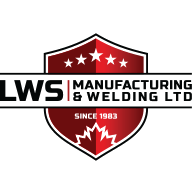What are Welding Shielding Gases?
LWS Manufacturing & Welding is proud to be your go-to source for all things related to metal welding and fabrication. That is why we have put together information to shed some light on a crucial component of the welding process: welding shielding gases. Read on to learn what welding shielding gases are.
Understanding Shielding Gases
Shielding gases are inert or semi-inert gases that surround the weld to protect it from being contaminated by atmospheric gases like oxygen, nitrogen, and water vapour. Without a shielding gas, welds can become weak, brittle, or porous, compromising the structural integrity of the finished product. This means that shielding gases can help protect the weld pool from atmospheric contamination, provide stability for the arc, and can even influence the shape and quality of the weld.
If you are looking to find out more about welding in general, here’s some information on the types of welding rods.
Some of the different types of shielding gases include:
Carbon Dioxide (CO₂)
Carbon Dioxide is the only common shielding gas that is not an inert gas. It is used because it yields a high heat input, which facilitates deeper penetration of the weld; however, it also leads to a higher rate of splatter. CO₂ is often mixed with other gases like argon to create a more stable arc and reduce splatter.
Argon (Ar)
Argon is an inert gas that is frequently used as a shielding gas due to its versatility. It is excellent for TIG welding and is also commonly used in MIG welding for non-ferrous metals like aluminum and magnesium. It provides a very stable arc and cleaner welds with less spatter.
Helium (He)
Helium is another inert gas used in both MIG and TIG welding processes. It is particularly valuable when welding non-ferrous metals and stainless steel. The use of helium provides a higher heat input, resulting in a broader and deeper weld; however, it may be harder to start and maintain an arc with helium compared to argon.
Oxygen (O₂)
While oxygen is often the enemy in the welding process, small amounts can be beneficial. Typically mixed with argon, oxygen helps to stabilize the arc and improve the weld’s quality; however, it is important to keep in mind that too much oxygen can lead to oxidation, so the balance needs to be correct.
Mixtures
Many welding applications use a mixture of shielding gases to gain the benefits of each. Argon-CO₂ mixtures are common for MIG welding steel, where the argon provides a stable arc and the CO₂ improves penetration. Other mixtures, like argon-oxygen or argon-helium, are also used depending on the specific requirements of the weld.
At LWS Manufacturing & Welding, we take into account all these factors to ensure the best possible weld for your project. Whether you need a simple weld or a complex fabrication, we have got the expertise and the equipment to meet your needs. Do not hesitate to get in touch with us via our website contact form or give us a call to book us for your next welding project.




